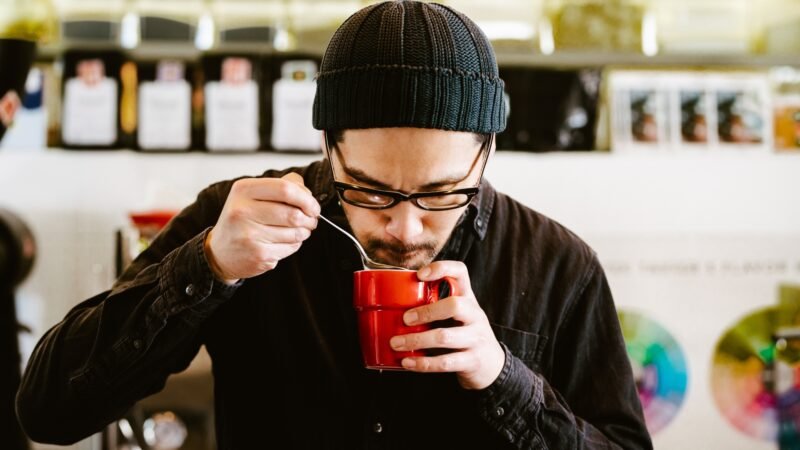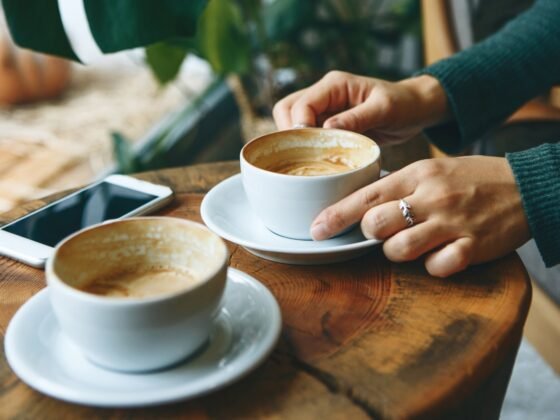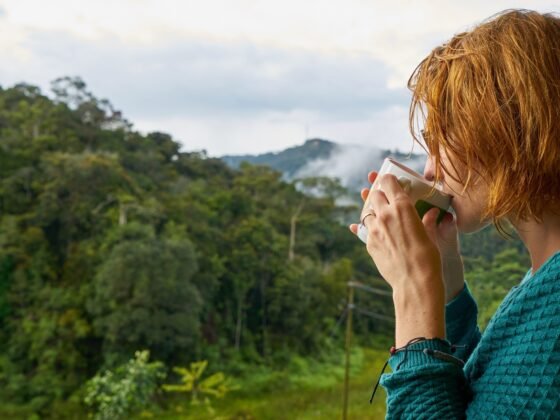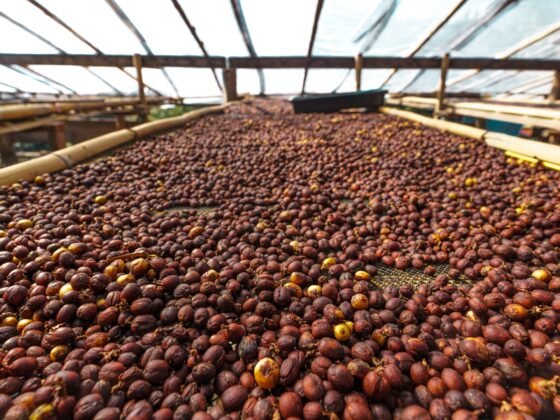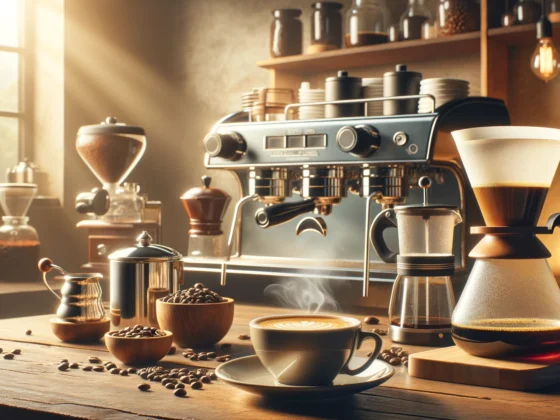Coffee isn’t just a beverage; it’s a global sensation that brings people together, offering a variety of experiences that cater to almost every palate and preference. As a coffee enthusiast, I’ve had the pleasure of exploring the multifaceted world of coffee through numerous activities. Tastings, for example, allow you to appreciate the nuanced flavors of different coffee beans and roasts. These events often educate participants on the origin of the beans, the roasting process, and how these factors influence the taste profile.
Pairing coffee with food is another enriching experience that elevates both the drink and the dish. Much like wine pairing, discovering which coffee complements a sweet, savory, or even spicy meal can enhance one’s enjoyment and appreciation for the culinary arts. It’s fascinating to learn how a robust espresso can amplify the flavors of a dark chocolate dessert, or how a light, citrusy coffee can provide a refreshing contrast to a rich breakfast pastry.
Exploring the world of coffee also involves learning about its preparation methods. From pour-over techniques to espresso machines, each method affects the final cup’s flavor and strength. I’ve spent countless hours perfecting my brew, experimenting with grind sizes, water temperatures, and brewing times. Sharing this knowledge with others has not only deepened my understanding of coffee but has also allowed me to connect with a community of like-minded individuals who value the craft and culture of this beloved beverage.
Coffee Origins
The story of coffee is deeply rooted in history and shaped by the geography of where it’s grown.
Historical Perspective
Coffee’s journey begins in the forests of Ethiopia where it was likely discovered by a goat herder named Kaldi in the 9th century. The story goes that he noticed his goats became unusually energetic after eating berries from a certain tree. Monks at a local monastery then made a drink with the berries and discovered it kept them awake during long hours of prayer. Word of this energizing berry spread, and by the 15th century, coffee was being grown in the Arabian Peninsula, heralding the start of trade and coffee cultivation as we know it.
Ethiopia – the birthplace of coffee:
- 9th Century: Discovery by a goat herder
- 15th Century: Cultivation extends to the Arabian Peninsula
Geographical Influence
I understand that climate and terrain play crucial roles in coffee characteristics, and this is most evident when considering the Coffee Belt. This is the region between the Tropics of Cancer and Capricorn where coffee plants find the perfect balance of sunshine, rain, and temperature. Here, various countries contribute unique flavors to the world’s coffee palette due to their distinct climates and elevations.
Key Coffee Belt Contributors:
- Brazil: World’s largest producer, known for its chocolatey and nutty arabica beans.
- Colombia: Renowned for smooth, mild coffee with a well-balanced acidity.
- Ethiopia: Offers a diverse range of flavors, often with floral and fruity notes, due to its varied regions and heirloom varieties.
- Vietnam: Second-largest producer globally; dominant in robusta beans with a strong, bold flavor.
The Art of Tasting Coffee
Tasting coffee is a nuanced activity that requires attention to detail and a developed palate. It’s a skill that enhances one’s appreciation for the diverse flavors of coffee.
Sensory Analysis
My first step in tasting coffee is engaging in sensory analysis, a critical approach to understanding the complexities in a cup. Visual Inspection is integral; I observe the color and consistency of the brew, looking for vibrancy and clarity, which can indicate quality. My next focus is Aroma Evaluation. I inhale deeply, identifying scents ranging from fruity to nutty or floral to earthy. Often, the aroma can give clues about the coffee’s origin and roast level. Lastly, I analyze Taste and Mouthfeel. I note the acidity, sweetness, bitterness, and body — how the coffee feels on my palate, whether it’s creamy, syrupy, or thin.
Flavor Profiles
In identifying flavor profiles, I categorize the tastes and sensations experienced when sampling coffee. I utilize a flavor wheel to pinpoint specific notes. Below is a simplified representation:
| Flavor Category | Typical Notes |
|---|---|
| Fruity | Berries, Citrus, Apple |
| Floral | Jasmine, Rose, Chamomile |
| Nutty | Almond, Hazelnut, Walnut |
| Sweet | Chocolate, Caramel, Honey |
| Earthy | Soil, Wood, Tobacco |
I assess each profile on its intensity and harmony. For example, a single-origin Ethiopian coffee might exhibit a bright acidity with prominent berry and floral notes, while a Sumatran coffee could have earthy and woody undertones with a rich body. In my analysis, it’s important to consider how these flavors blend and balance in the cup.
Home Brewing Techniques
In my approach to home coffee brewing, I focus on the impact of grind size and brewing method. Each choice directly shapes the flavor and quality of the coffee.
Grinding Methods
I usually grind my coffee beans just before brewing to maintain freshness. The two primary methods I use are:
- Burr Grinder: This consistently crushes beans to a uniform size. Table below shows suitable grind sizes:
Brew Method Grind Size Espresso Fine Pour-over Medium-fine French Press Coarse - Blade Grinder: Less uniform but quick. I use short bursts to avoid overheating the beans, which can alter the flavor profile.
Brewing Styles
My brewing style selection is strategic, aimed at extracting the full potential from coffee grounds. I use various styles depending on the time and taste desired:
- Pour-over: I control the water temperature and pouring speed, which affects extraction. Ideal temperature is around 195°F to 205°F.
- French Press: An immersion technique where grounds steep in hot water before pressing. It extracts deep flavors, suitable for a full-bodied cup.
- Espresso Machine: This requires precision. I ensure water is between 195°F to 205°F with a pressure of 9 bars to produce a rich, concentrated shot.
- Cold Brew: For a smoother, less acidic beverage, I steep coarse grounds in cold water for 12-24 hours, then filter it.
Professional Coffee Cupping
Professional coffee cupping is a structured approach to evaluating the aromas and flavors of coffee beans. It is a critical process that involves meticulously slurping coffee to assess its taste profile.
Cupping Protocol
I start with freshly ground coffee, assessing its fragrance before adding hot water. The grounds are allowed to steep, and I break the crust that forms to evaluate the aroma. Sampling the coffee, I slurp it vigorously to ensure it spreads evenly across my palate, which allows for a comprehensive assessment of the flavor.
- Grind Size: Medium
- Water Temperature: ~ 200°F (93°C)
- Ratio: 8.25 grams of coffee to 150 ml water
- Resting Time: 4 minutes before breaking the crust
Following each step with precision ensures consistency across different sessions, enhancing the reliability of my evaluations.
Scoring and Evaluation
I use a standardized form to score each aspect of the coffee, from aroma to aftertaste, acidity to body, and balance to overall flavor. Each attribute is rated on a scale, often from 0 to 10 or 0 to 100, and descriptions are detailed for clarity.
| Attribute | Score (0-10) |
|---|---|
| Aroma | |
| Flavor | |
| Aftertaste | |
| Acidity | |
| Body | |
| Balance | |
| Overall |
Scores are tallied to provide a comprehensive profile of the coffee’s quality. This systematic scoring method is essential for understanding a coffee’s unique characteristics and its suitability for various uses.
Coffee and Food Pairings
Pairing coffee with food enhances the enjoyment of both, much as wine is paired with food. I’ll focus on matching coffee’s flavor to complement a dish and share some established guidelines to elevate your next tasting experience.
Complementary Flavors
In my experience, it’s essential to identify the coffee’s flavor profile, which includes the body, acidity, and notes ranging from fruity to nutty or chocolaty. For example, a light roast with citrus notes pairs wonderfully with a blueberry muffin, where the acidity complements the blueberries’ tartness. On the other hand, a full-bodied dark roast with chocolate undertones can elevate the taste of a rich chocolate brownie, allowing the flavors to resonate together.
When considering savory options, a medium roast complements a variety of breakfast items such as ham and cheese croissants, where the coffee’s balanced profile supports the dish without overwhelming it. Below is a small table outlining some targeted pairings I find successful:
| Coffee Roast | Flavor Notes | Food Pairing Example |
|---|---|---|
| Light Roast | Citrusy | Lemon pound cake |
| Medium Roast | Nutty | Almond biscotti |
| Dark Roast | Chocolaty | Chocolate espresso cake |
| Any Roast | Fruit-Forward | Blueberry scones |
Pairing Guidelines
First, I determine the coffee’s intensity. A basic rule is to pair light roasts with lighter foods and darker roasts with heartier, more robust dishes. However, I temper this rule with consideration for the predominant flavor notes of the coffee; for instance, nutty flavors typically go well with similar nut-themed foods. My pairing strategy often incorporates contrast as well. A tart, acidic coffee might pair nicely with a sweet caramel dessert, as contrasting flavors can create a harmonious balance on the palate.
I always recommend sampling the coffee with a small bite of food to find the most enjoyable combination. Here are some concise guidelines:
- Intensify: Match coffee intensity with food robustness.
- Balance: Consider acidity, sweetness, and bitterness of both the coffee and food.
- Contrast: Use opposite flavors to enhance the overall experience.
- Trial: Taste and adjust pairings according to your personal preference.
Barista Skills and Latte Art
I recognize that mastering barista skills and creating latte art are quintessential to enhancing the coffee experience. This requires a sound understanding of espresso preparation and milk texturing.
Espresso Preparation
I ensure that my espresso shot is the heartbeat of any espresso-based drink. Here are the steps I follow for a perfect extraction:
- Grind coffee to the right consistency, typically fine for espresso.
- Dose the coffee correctly, usually within 18-20 grams for a double shot.
- Tamp the grounds evenly with the right pressure to ensure uniform extraction.
- Extract the shot within 25–30 seconds aiming for a balanced flavor,
characterized by a harmony between sweetness, acidity, and bitterness.
Proper espresso preparation lays the foundation for not only a delicious beverage but also for stunning latte art.
Milk Texturing and Pouring
Mastering milk texturing is critical for me to create the perfect canvas for latte art. Here is a brief guide:
- Fresh milk: I always use cold, fresh milk as it froths better.
- Steam pressure: I adjust the steamer’s pressure to suit the amount of milk.
- Texture: I seek to achieve microfoam, which is smooth and velvety, without large bubbles.
- Temperature: I heat the milk to about 60-65°C for optimal sweetness and texture.
| Technique | Purpose |
|---|---|
| Swirling | Mixing & polishing microfoam |
| Tapping | Removing large bubbles |
Once the milk is textured, I focus on the pouring technique, starting from a higher point to mix with the espresso and gradually bringing the pitcher close to create intricate patterns, from simple hearts to complex rosettas. The pouring speed and movement are vital to shaping the art.
Coffee-Related Events
Exploring coffee-related events allows me to immerse myself in diverse activities from tastings to education. These gatherings cater to a range of interests, whether competitive, social, or educational.
Festivals and Competitions
Coffee Festivals
I often find that coffee festivals are vibrant showcases of different coffee cultures and brewing methods. An example is the London Coffee Festival, where attendees can sample a myriad of coffee flavors from all over the world.
Barista Competitions
Competitions such as the World Barista Championship are where professional baristas display their skills. Participants are judged on taste, cleanliness, creativity, and overall presentation.
Workshops and Classes
Home Brewing Workshops
I value hands-on workshops like Counter Culture’s Home Brewing classes, which guide participants through the coffee brewing process. These classes often cover various brewing methods, from French press to AeroPress.
Coffee Pairing Classes
Expert-led classes on coffee pairing teach me how to match different coffee profiles with food. Classes may include combinations with chocolate, cheese, or pastries, enhancing the overall tasting experience.
Sustainable Coffee Practices
Sustainable coffee practices are pivotal for the longevity of the coffee industry. I’ll focus on two key areas where sustainability is crucial: ethical sourcing and environmental stewardship.
Ethical Sourcing
Ethical sourcing is about ensuring that the coffee I enjoy is grown and harvested under conditions that respect the well-being of workers and their communities. To this end, Fair Trade Certification is essential, as it guarantees farmers receive a fair price for their beans. This, in turn, contributes to:
- Better livelihoods: Fair wages empower farming communities.
- Community development: A portion of Fair Trade premiums go towards local projects.
Furthermore, purchasing Direct Trade coffee helps foster a transparent relationship between growers and buyers, often leading to higher pay for farmers and superior quality beans for consumers.
Environmental Stewardship
My focus on environmental stewardship helps ensure that coffee production respects and maintains ecological balance. Key practices include:
- Shade-Grown Coffee:
- Preserves habitats for wildlife
- Reduces deforestation by integrating coffee plants into local forest systems
- Organic Farming:
- Eliminates synthetic fertilizers and pesticides to protect soil and water resources
- Encourages biodiversity through the preservation of various plant and animal species
Implementing water conservation efforts and energy-efficient processes in coffee production and processing also constitutes an integral part of environmental stewardship. These efforts ensure the sustainability of coffee as both an agricultural product and an ecosystem.
